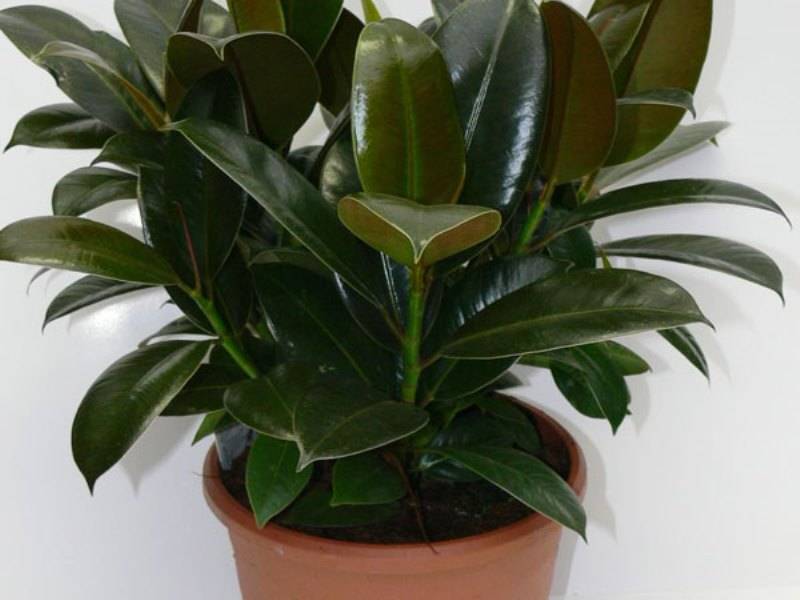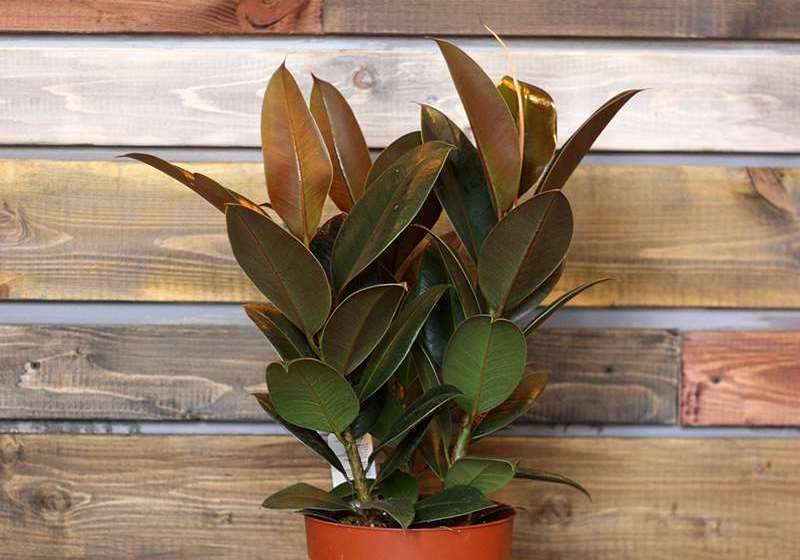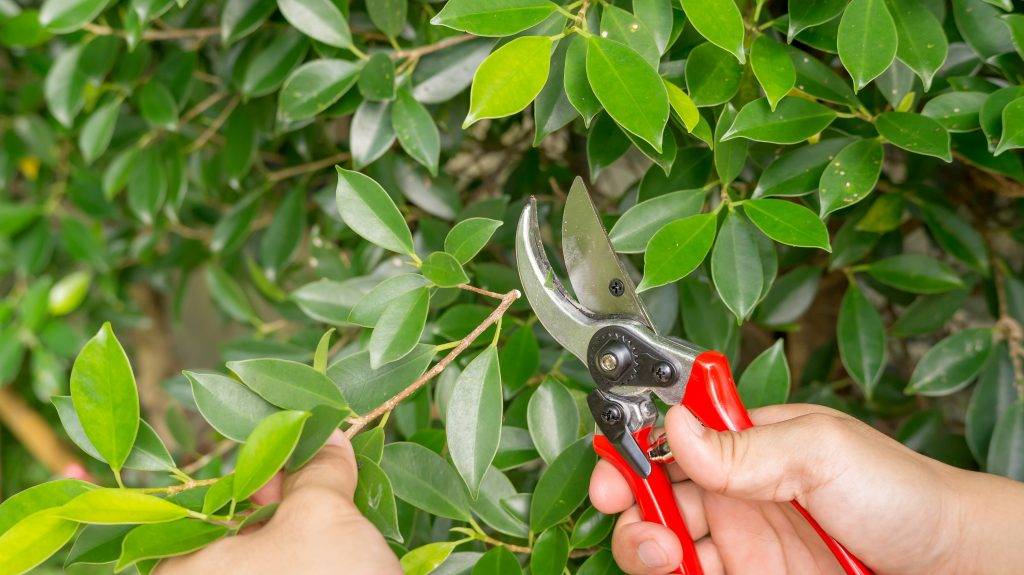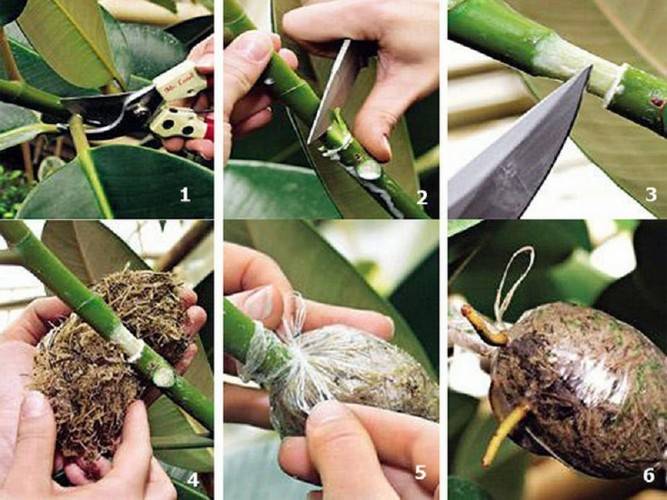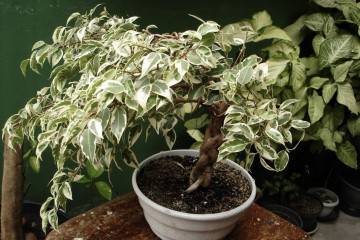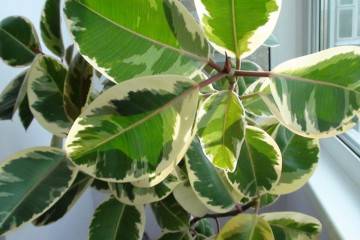Ficus Melanie - home care
Content:
Ficus Melanie as a variety appeared quite recently, but has already managed to gain popularity among flower growers. Unlike its relatives, it has smaller foliage and trunk. With properly organized care, it will become a real decoration both in the apartment and in the office.
What does Ficus Melanie look like, which family does it belong to
Melanie rubber ficus is a compact plant. Asia is considered the birthplace of ficus. In the wild, it is found in rainforests. The territory of distribution covers India and Indonesia. In its natural habitat, it grows up to 50 centimeters. The plant belongs to the Ficus genus, the Mulberry family. The Latin name Ficus elastica Melanie translates as ficus elastica Melanie.
Indoor plant grows up to 15 centimeters, this is the smallest tree among ficuses. The plant has a strong trunk, massive leaves of a dark green color are located on the branches. Deciduous plate up to 12 centimeters long and 8 centimeters wide. The Melanie variety has pink stipules. The leaves on the trunk are arranged alternately.
Common varieties
There are about 40 varieties of ficuses in the world. They are divided into three groups:
- tree-like - have large spreading branches, grow up to two meters;
- ampelous - decorative, characterized by long hanging branches;
- shrub - grow up to 50 centimeters, intended for growing at home.
The most common varieties include:
- Microcarpa. Plant height about 50 centimeters, diameter 9-14 cm. The stem is dense, stiff. The leaves are small, thick, deep green.
- Benjamin. The crown is thick, the trunk can be intertwined. The leaves are small, can be ovoid, xiphoid. The edges are straight or serrated.
- Rubbery. It has large leaves, rich green color, there is a small bloom on the surface. It got its name from the juice. Previously, rubber was made from it.
- Benedict. The leaves are elongated, at the end of the pointed plate resemble a sword. The trunk is large, stiff. Leaves can be solid or variegated.
Healing properties
The plant has medicinal properties. The leaves are used to heal wounds, they get rid of boils. In dried form, they are used in the treatment of hemorrhoids. Decoctions from Melanie treat inflammation in the urogenital area.
The flower has a calming effect. Being in a room with a flower can help relieve depression and stress.
Briefly about the history of appearance
Ficus has a rather long history. The plant is mentioned in Indian legends. Ficus is depicted in the tombs of the Egyptian pharaohs. The tombs themselves were also made of ficus. In ancient times, Melanie was called a rubber tree because of the juice that was extracted from the leaves and stem. Muslims and Buddhists consider this bush sacred.The Melanie variety is also bred and grown in Holland, from where it is distributed throughout the world.
Features of caring for a flower at home
This home flower is unpretentious to care for. Caring for Melanie's ficus at home includes:
- regular watering;
- fertilization;
- temperature compliance;
- correct lighting;
- selection of soil;
- spraying;
- pruning;
- maintaining humidity.
The first thing to do after purchasing a flower is to choose a place where it will grow. An east or west window sill will do. The place must be protected from drafts.
Temperature
The optimum temperature is from +20 to -25 degrees. It is permissible to decrease the temperature to 16 degrees of the rate, the upper indicator should not exceed 30 degrees. In the summer it is necessary to shade the plant. Low temperatures (+12 degrees) can lead to the death of the plant.
Lighting
Ficus should be placed in a well-lit place. At the same time, make sure that direct sunlight does not fall on the leaves. If this happens, burns may occur. Daylight hours for ficus should be at least 14 hours. In winter, so that the bush does not suffer from a lack of ultraviolet radiation, it is necessary to organize additional lighting.
Watering
In the spring and summer, water the plant twice a week. With the onset of winter, the amount of watering decreases. It is impossible to fill in the ficus. Excess moisture provokes root rot. For irrigation, use settled or filtered water.
Watering depends on such factors:
- temperature;
- humidity;
- soil condition;
- lighting;
- age.
Spraying and moisture
Ficus grows well in high and low humidity. Feels good with a humidity of 50 percent. On hot days, it is still recommended to sometimes spray the flower - arrange it with a little spirit with warm water or just wipe the leaves with a damp cloth.
Priming
Ficus prefers loose nutritious soils, the basis of which is sod and deciduous parts. You can add humus to the finished soil, one part for 2 parts of turf and 2 the same amount of leafy soil. For looseness, one part of sand or peat-sand mixture is also added. You can purchase ready-made soil.
Top dressing
For growth and development, the plant needs feeding. In the first year of life, the bush is fed twice a month. The first one - on time of planting, the second - after 15 days. Then fertilized with mineral complexes once a month. Pour the top dressing exclusively at the root.
Features of care in winter, dormant period
In winter, the plant goes to rest. The temperature drops to +16 degrees, the air humidity is up to 50 percent. Watering is reduced. It is necessary to moisten the soil when the top ball is dry. You can check this with your finger.
Pruning and shaping the crown
Pruning is done once a year. This is best done in February and March. During pruning, lateral shoots are shortened - branches that have lateral leaves are pruned. Also, shoots are cut, which are bent inward. Pruning allows you to remove parts of the branches that do not fit the shape of the plant.
The procedure is carried out with a sharp knife or scissors. Before starting the process, the tool should be wiped with alcohol. Do not cut many branches at a time. It is recommended to take breaks of up to 7 days. During this time, the tree will have time to rest. In an adult plant, shoots are cut to 12 centimeters.
Reproduction at home
Ficus can be propagated in several ways, each of which requires compliance with certain rules.
Seed propagation
The seed method is quite laborious. Sowing by seeds is carried out in February. This requires:
- Soak seeds for 24 hours.
- Fill the pot with soil two thirds.
- Place seeds in small holes and sprinkle with soil.
- Cover the container with seedlings with foil.
- Ventilate and moisturize once a day.
After the appearance of the first leaves, the bushes must be planted in separate containers.
Rooting cuttings
Cuttings are carried out at any time of the year. Shoots are cut off from the ficus (up to 12 centimeters), from two or more leaves should grow on each shoot. The cut branch is placed in a solution of potassium permanganate for six hours. Then the cutting is immersed in a container of clean water. As soon as the sprout takes root, it is planted in a pot.
Air diverters
To root the ficus with air layers, a small area up to 6 centimeters in height must be cleaned on the branch. Apply activated carbon to the cleaned area. Wrap the processed branch with foil. Place soil or moss inside, then tie it with rope. You should get a small keg. Leave a small hole on top. Attach the shoot to a stick and stick it into the pot to the flower.
Water the plant through the top hole. A month later, the first roots appear on the handle. Then the stalk must be cut at an angle and planted in a new place.
Possible growing problems and diseases
When growing Melanie, growers often face the following problems:
- ficus sheds leaves;
- leaves turn pale;
- leaves turn yellow and dry;
- the lower leaves fall off.
Similar symptoms appear if the tree is not properly taken care of. The deciduous plate deforms and dries - dry air in the house. The leaves turn pale and fall off - the temperature is too high. Abundant foliage discharge is the result of interrupting a flower in a draft and in a cold room. Leaves grow dull due to lack of minerals.
With poor maintenance, the flower can get sick:
- gray rot;
- spotted;
- spider mite;
- aphids.
You can get rid of them with the help of the preparations "Actellik", "Fitoverm", "Fufanon".
Signs and superstitions
There are many signs and superstitions associated with ficus. According to the signs, the plant brings well-being to the house. If you give a tree to a young couple, then the girl will soon become pregnant, and the plant itself will protect and protect the child.
Ficus Melanie is an excellent houseplant that is used for landscaping an apartment or office. It does not take up much space, does not require complex maintenance, but it decorates the interior.

